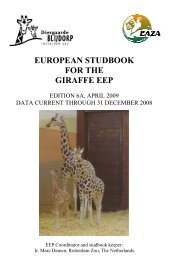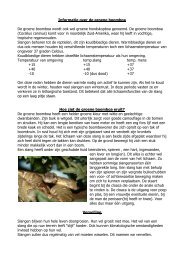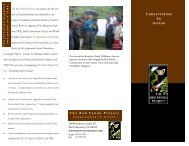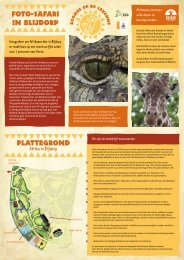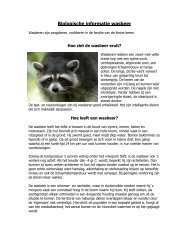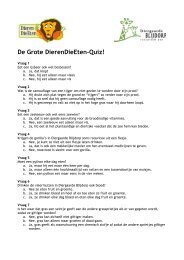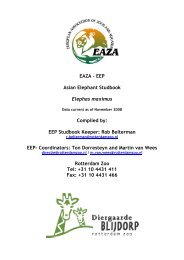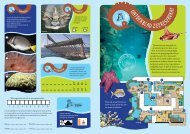Create successful ePaper yourself
Turn your PDF publications into a flip-book with our unique Google optimized e-Paper software.
<strong>EEP</strong> STUDBOOK CROWNED PIGEONS<br />
6.1 <strong>Crowned</strong> Pigeons: Species or sub-species?<br />
Scientists are not sure whether the three species are real species or sub-species to one species.<br />
According to Goodwin (1983) a species can be defined as a <strong>number</strong> of individuals all of<br />
which show more resemblance to each other than to other species, interbreed freely with each<br />
other, and do not normally breed with members of another species’. Both in the wild and in<br />
captivity, hybrids can be found. In the Siriwo River region of north-western New Guinea<br />
Goura Victoria and Goura Cristata meet and hybridise (Goodwin, 1983). This paper<br />
describes in short the position of crowned <strong>pigeon</strong>s within the taxonomic system and the<br />
history of the island of New Guinea to support the discussion whether there are three species<br />
or three subspecies of crowned <strong>pigeon</strong>s.<br />
Taxonomic position of crowned <strong>pigeon</strong>s<br />
The class of birds (aves), within the vertebrates (vertebrata), consists of 34 orders, and<br />
crowned <strong>pigeon</strong>s belong to the order of <strong>pigeon</strong>s and doves (Columbiformes). This order, on its<br />
turn, originally comprised three families: the sandgrouse (Pteroclidadae), the dodos<br />
(Raphinae), which became extinct during the 17th and 18th centuries (Harrison (ed.), 1978)<br />
and the <strong>pigeon</strong>s (Columbidae). The Columbidae comprises 4 subfamilies with a total of 43<br />
genera and some 255 species of <strong>pigeon</strong>s. They are found in most parts of the world except for<br />
polar and subpolar regions and some oceanic islands. The term ‘<strong>pigeon</strong>’ is sometimes used to<br />
denote the larger species, in contrast to the smaller species which are known as ‘doves’, but<br />
the terms are not consistently used and are not based on any real biological distinction<br />
(Goodwin, 1983). Pigeons are unique among birds in that their young are fed on a nutritious<br />
substance known as‘crop-milk’ (Baptista, et al., 1997).<br />
Group Vertebrata Vertebrates<br />
Class Aves Birds<br />
Sub-class Neornithes True birds<br />
Superorder Neognathae Typical Birds<br />
Order Columbiformes Sandgrouse and Pigeons<br />
Sub-Order Columbae Pigeons, Dodos and Solitaires<br />
Family Columbidae Pigeons, Doves<br />
Sub-family Gourinae <strong>Crowned</strong> <strong>pigeon</strong>s<br />
Genus Goura <strong>Crowned</strong> <strong>pigeon</strong>s<br />
Species (e.g.) cristata Common crowned <strong>pigeon</strong><br />
Sub-species (e.g.) Minor Lesser common crowned <strong>pigeon</strong><br />
The four subfamilies are the Columbinae (including typical <strong>pigeon</strong>s and doves), Treroninae<br />
(containing fruit <strong>pigeon</strong>s and fruit doves), the Gourinae (containing only crowned <strong>pigeon</strong>s)<br />
and the Didunculinae (contains but the one species of tooth-billed <strong>pigeon</strong> - Didunculus<br />
strigirostris) (Goodwin, 1983).<br />
The subfamily of Gourinae consists of only one genus: the Goura, firstly described by<br />
Stephens, 1819 (Baptista, et al., 1997). A genus is a group of species that are closely related<br />
to each other and all of whose members appear to be more closely akin to other species within<br />
the same genus than they are to any other species of other genera (Goodwin, 1983).<br />
80



